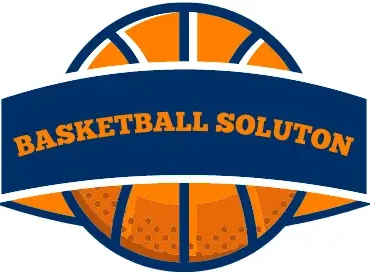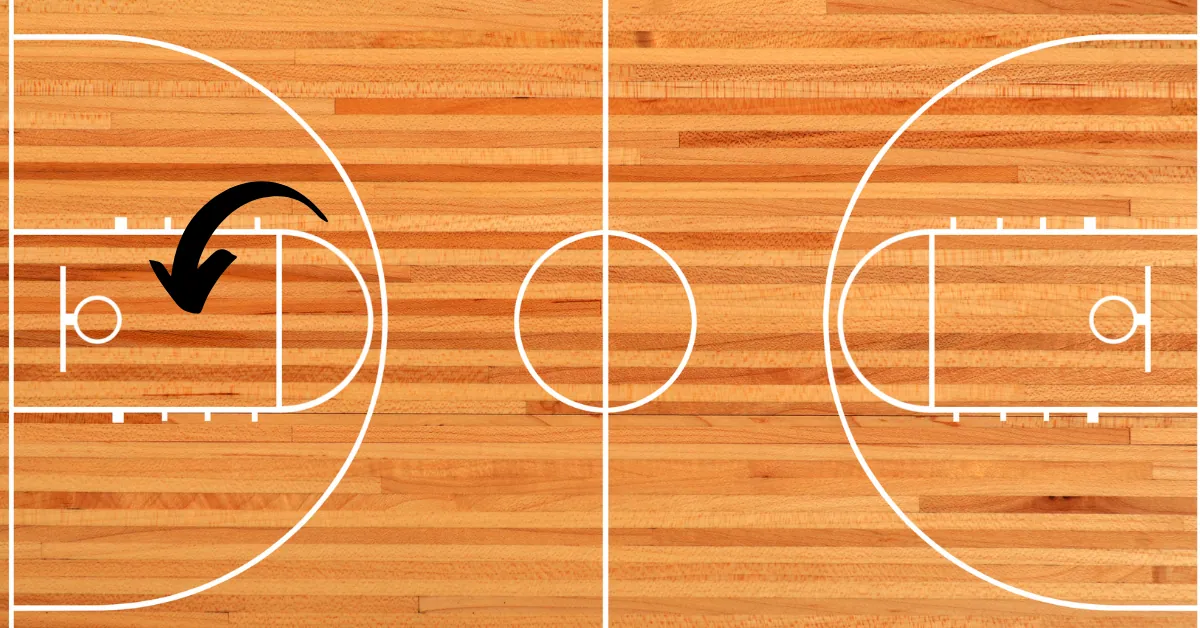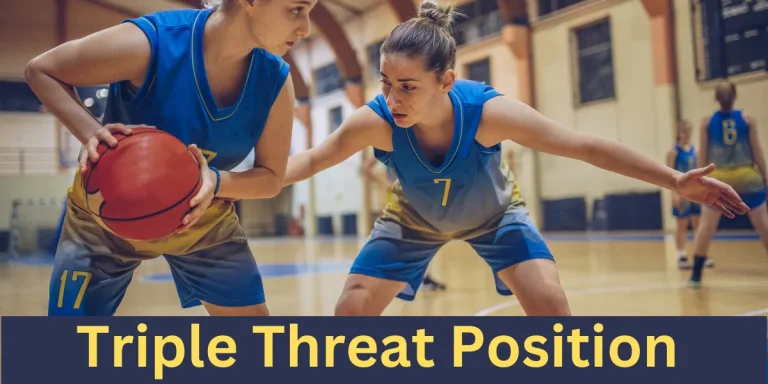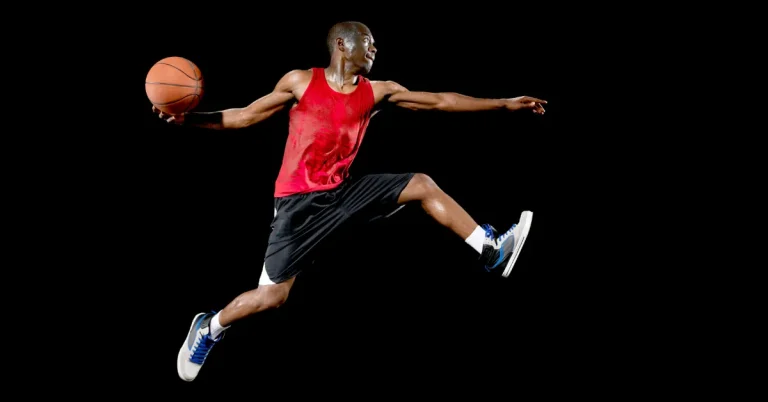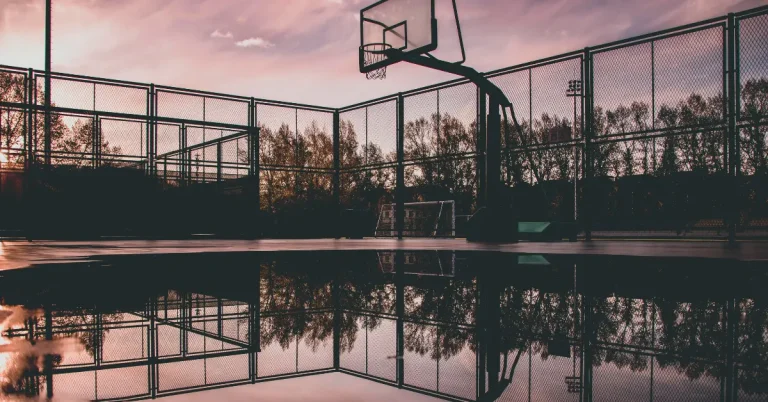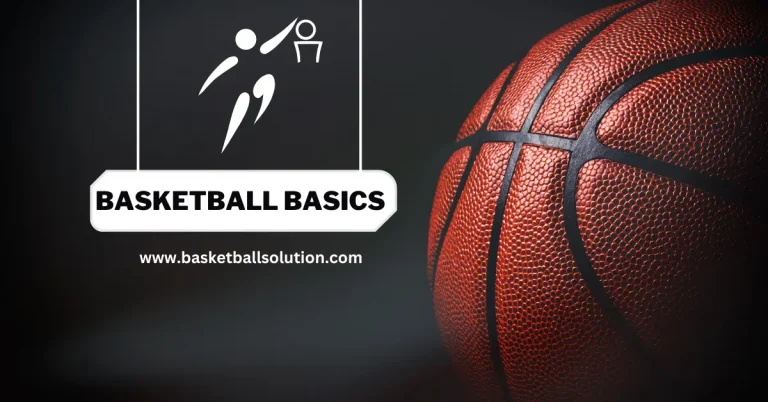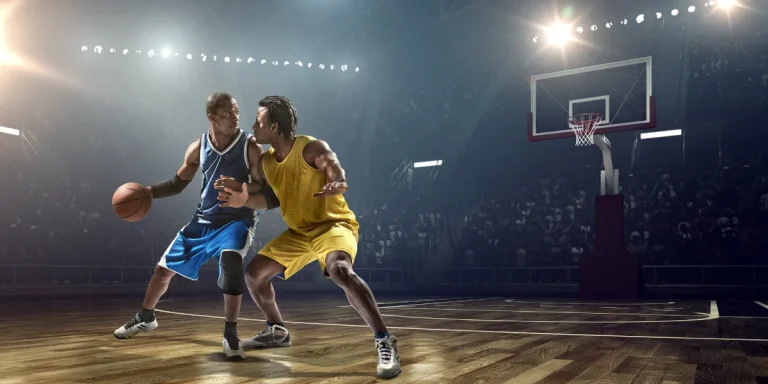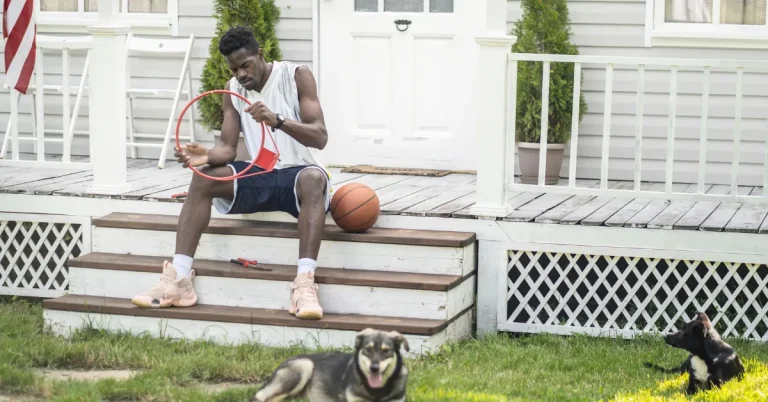What is the paint in basketball? Positions, Rules, and Violation
Do you ever find yourself wondering what exactly “paint” refers to in the context of basketball? If you’re new to the game or looking to brush up on your basketball knowledge, understanding this crucial area of the court is essential. In this beginner’s guide, we’ll explore the ins and outs of the paint in basketball, from its origins to its purpose, providing you with a solid foundation to appreciate this fundamental aspect of the sport.
Paint meaning in basketball refers to the rectangular area on the court that includes the free-throw lane and extends toward the baseline.
It is often painted a different color and serves as a key component of the playing surface. The paint’s boundaries and markings have important implications for gameplay, player positioning, and strategic decision-making during a basketball match.
Different Parts of the Paint Basketball to Know
To fully understand the paint in basketball, it’s essential to familiarize yourself with its different parts and their significance. Here are some key components you should know:
Free-Throw Lane
The Free-Throw Lane, also called the Key or Paint, is the rectangle near the hoop. It’s between the baseline, free-throw line, and lane lines. Players fight for rebounds here and often get fouled. You can only stay here for 3 seconds unless you’re trying to score.

Top of the Key
The top of the key is the central spot on the court where the free-throw line meets the three-point line. It’s important for offense and defense. Offensively, players start plays or take shots here. Defensively, it’s crucial for guarding against drives and outside shots.
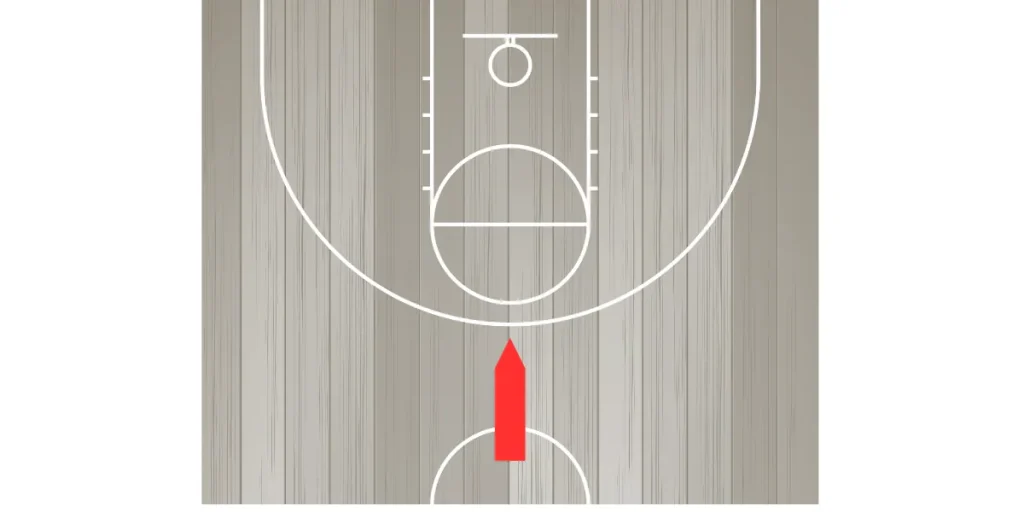
High Post Area
The high post is near the free throw line, usually at the top of the key. Players use it to start plays and pass the ball to teammates. They can also drive to the hoop or take mid-range shots from here. It’s a key spot for scoring and creating opportunities on the court.
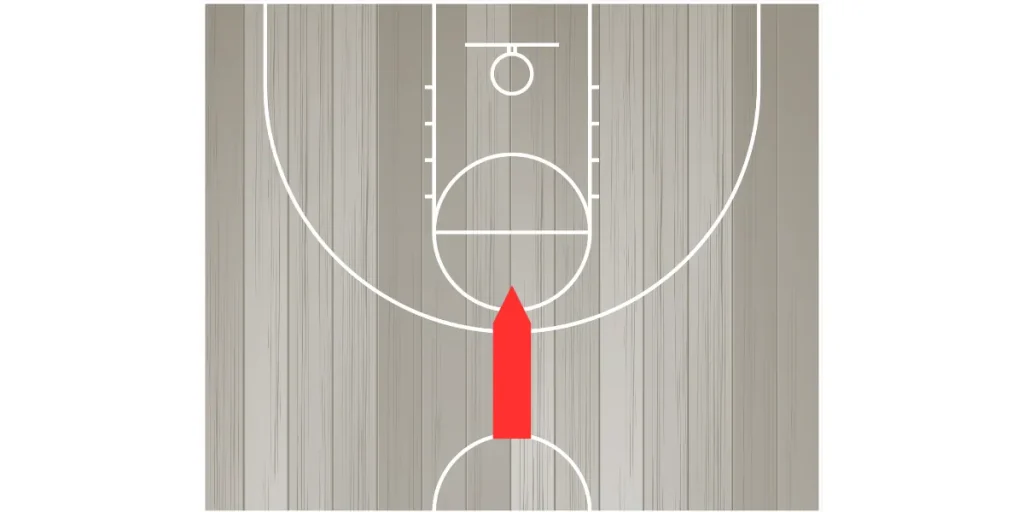
Low Post Area
The low block is near the baseline, close to the basket. Players use it to get close-range shots. They rely on their size and strength to score using moves like hook shots or turnaround jumpers. It’s crucial for inside the paint basketball scoring and getting second-chance points.
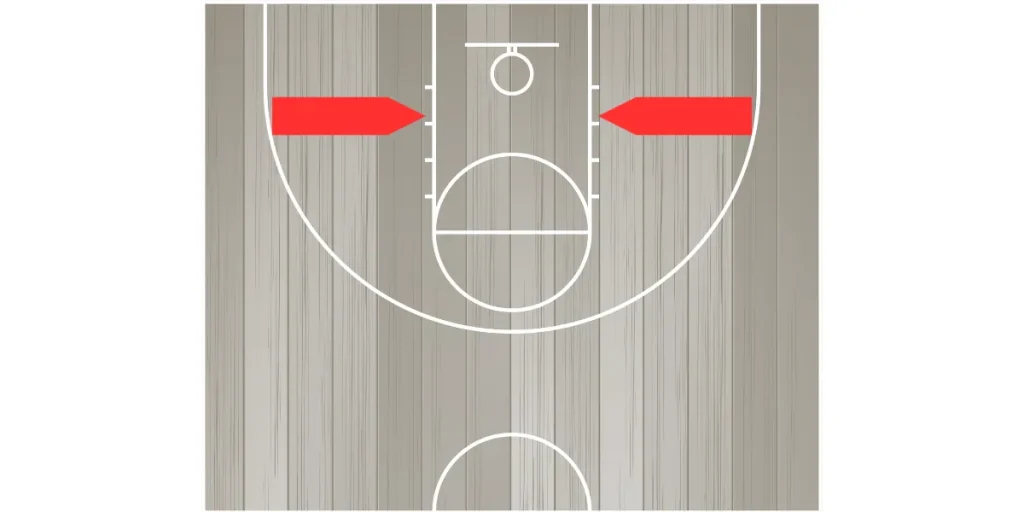
Center Circle
Located at the midpoint of the court, the center circle encompasses the jump ball circle. It plays a role in determining possession at the start of the game and overtime periods.
Understanding these various parts of the paint is crucial for players to effectively navigate the court, execute plays, and adhere to the rules of the game.
Rules for The Paint
When it comes to the rules governing inside-paint basketball, there are several important regulations that players, coaches, and officials must adhere to.
Three-Second Rule
Offensive players must not stay in the restricted area (paint) for more than three consecutive seconds while their team has control of the ball. Violating this rule leads to a turnover, and the officials award possession to the opposing team.
Defensive Positioning
Defenders must maintain a legal guarding position when guarding an offensive player in the paint. This means they cannot initiate contact, impede the progress of the offensive player, or create an unfair disadvantage.
Offensive Goaltending
Once the ball begins its downward trajectory toward the basket, the rules prohibit offensive players from touching the ball within the cylinder of the hoop. Violating this rule constitutes offensive goaltending, resulting in the nullification of the basket.
Charging vs. Blocking
When an offensive player drives into the paint, a defender must establish a legal guarding position to draw a charging foul. If the defender is not in a legal guarding position and initiates contact with the offensive player, the officials call a blocking foul instead.
Rebounding Battles
The paint is a crucial area for rebounding, and players must contend for position legally. Pushing, holding, or impeding the progress of opponents while going for a rebound is a foul and can result in penalties.
These rules ensure fair play and maintain a level playing field for both offensive and defensive players in the paint.
NBA Basketball Paint Violation
In the NBA, players must follow strict rules in the paint to ensure fair play. Common violations include the three-second violation, offensive goaltending, charging fouls, defensive three-second violations, and lane violations during free throws.
The three-second violation occurs when offensive players stay in the paint for more than three consecutive seconds while their team is in control. It results in a turnover.
Offensive goaltending is prohibited. Players cannot touch the ball within the cylinder of the hoop once it’s on its downward trajectory. It nullifies the basket.
Charging fouls happen when offensive players initiate contact with defenders who have established a legal guarding position.
Defensive players must avoid staying in the paint for more than three seconds if they are not actively guarding. It prevents the disruption of offensive plays.
During free throws, players must follow specific rules in the paint. They must wait behind the free-throw line until the ball contacts the rim.
Understanding and following these rules ensures fair play and a level playing field in NBA basketball. There are other positions on the basketball court that you must be aware of, like the wing position, baseline position, and center position on the court.
Strategies Players Use in The Paint
Players use various strategies in the paint to excel in FIBA basketball. Here are some concise strategies commonly employed:
Post-Up moves: Utilizing size and strength for advantageous positioning and scoring opportunities in the paint.
Offensive rebounding: Aggressively pursuing missed shots to score second-chance points or extend possessions.
Pick-and-roll: Employing screens to create scoring opportunities for oneself or teammates.
Cutting to the basket: Making quick, well-timed cuts towards the basket for high-percentage scoring chances.
Drawing Fouls: Skillfully enticing defenders into committing fouls, resulting in free-throw attempts.
Passing and kick outs: Making effective passes to open teammates on the perimeter for three-point opportunities.
Shot Blocking and Interior Defense: Contesting shots, protecting the rim, and impeding opponents’ scoring attempts.
These strategies enable players to excel offensively and defensively in the paint, contributing to their team’s success.
FAQs
What is the purpose of the paint in basketball?
The purpose of the paint in basketball is to define the area near the basket and establish specific rules and regulations for scoring, rebounding, and interior defense.
Does the NBA have a 3-second rule?
Yes, the NBA has a three-second rule. The rule prohibits offensive players from staying in the paint for more than three consecutive seconds while their team is in control of the ball.
Do FIBA and NCAA have the 3-second rule?
Yes, both the FIBA (International Basketball Federation) and NCAA (National Collegiate Athletic Association) also have a three-second rule. Similar to the NBA, offensive players in FIBA and NCAA basketball are not allowed to remain in the paint for more than three consecutive seconds while their team is in control of the ball.
Conclusion
Basketball in the paint holds significant importance on the court. It serves as a defined area near the basket, regulating scoring opportunities, rebounding, and interior defense. Players must adhere to specific rules regarding the paint, such as the three-second violation, offensive goaltending, charging fouls, and lane violations.
There is a common misunderstanding among some people who confuse the paint area in basketball with painting the court surface. Understanding and effectively utilizing the paint can greatly impact a player’s performance and contribute to their team’s success. Whether it’s the NBA, FIBA, or NCAA, the paint remains a crucial component of the game, shaping the strategies and outcomes of basketball matches.

Passionate basketball player striving for excellence on and off the court. Dedicated to the game since youth, I have honed skills through years of practice. Explore my journey, gear reviews, and dunking tips. Let’s elevate our game together!
